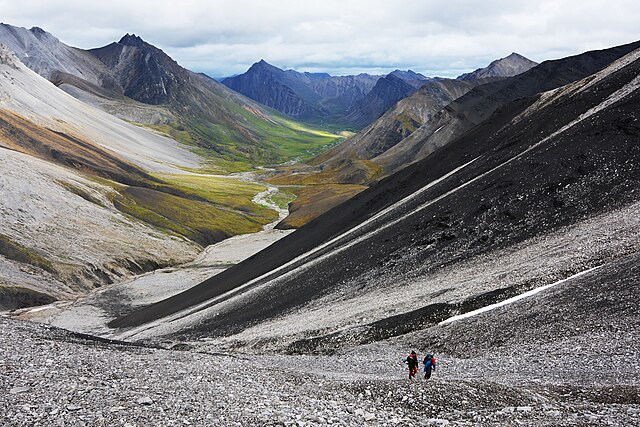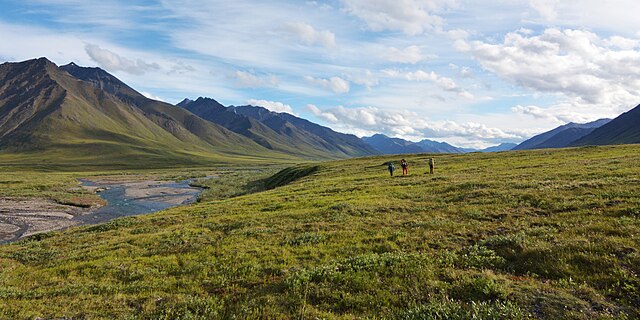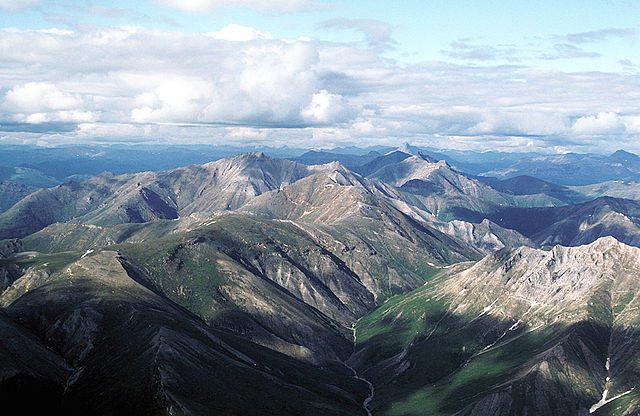Imagine a place so wild, so untouched, that it feels like stepping into a world where time forgot to leave its mark. That’s Gates of the Arctic National Park for you—a sprawling, rugged paradise tucked above the Arctic Circle in Alaska. Spanning over 8.4 million acres, it’s the second-largest national park in the United States, yet it’s the least visited, drawing only about 10,000 adventurers annually. Why? Because getting here is no walk in the park (pun intended). With no roads, no trails, and no facilities, this is nature in its rawest form. Ready to dive into what makes this park a bucket-list destination for the bold? Let’s explore!
Why Gates of the Arctic Is Unlike Any Other National Park
Gates of the Arctic isn’t your typical national park. Forget paved paths, crowded visitor centers, or Wi-Fi hotspots. This is a place where you’re truly on your own, surrounded by jagged peaks, sprawling tundra, and rivers that carve through the wilderness like veins of the earth. Located entirely above the Arctic Circle, it’s a land of extremes—think endless summer daylight and winters cloaked in aurora-lit darkness. It’s a park that demands respect, preparation, and a thirst for adventure. Ever wondered what it’s like to stand in a place where human footprints are rarer than bear tracks? This is it.
A Land of Superlatives
Gates of the Arctic is a land of jaw-dropping stats. It’s the northernmost national park in the U.S., sitting closer to the North Pole than any other. Its 8.4 million acres dwarf entire countries like Belgium. And with only about 10,000 visitors a year, it’s less crowded than your local coffee shop on a Monday morning. The park’s centerpiece, the Brooks Range, is the northernmost extension of the Rocky Mountains, with peaks that pierce the sky and valleys that whisper ancient stories. It’s a place where nature still calls the shots.
The Name That Started It All
The park’s name comes from a moment of pure awe. In 1929, wilderness advocate Bob Marshall explored the North Fork of the Koyukuk River and stumbled upon two towering mountains—Frigid Crags and Boreal Mountain—flanking the river like sentinels. He dubbed them the “Gates of the Arctic,” a poetic nod to the portal they formed into the wild Arctic north. That name stuck, and decades later, it became the heart of a park established in 1980 to preserve this pristine wilderness. Isn’t it wild to think one man’s moment of wonder named a national treasure?
A Wilderness Without Roads or Trails

Here’s the kicker: Gates of the Arctic has no roads, no trails, and no designated campsites. That’s right—zero. Getting here means flying in on a bush plane or hiking from the Dalton Highway, a gravel road that skirts the park’s eastern edge. Once you’re in, you’re navigating by map, compass, and sheer instinct. It’s like being dropped into a real-life adventure novel. This lack of infrastructure is what makes the park so special—it’s one of the last true wildernesses on Earth, where you can wander for days without seeing another soul.
Getting There: The Journey Is Half the Adventure
Reaching Gates of the Arctic is no small feat. Most visitors start in Fairbanks, Alaska, about 250 miles south, where you can hop on a small plane to gateway communities like Bettles, Anaktuvuk Pass, or Coldfoot. From there, bush planes or air taxis ferry you into the park’s heart, often landing on lakes or riverbeds. If you’re feeling extra rugged, you can drive the Dalton Highway and hike in, but be ready for a long, tough trek. The journey itself feels like a rite of passage—how many places require a floatplane just to say you’ve arrived?
Why So Few Visitors?
With only 10,000 to 11,000 visitors annually, Gates of the Arctic sees fewer people than a small-town high school reunion. The remoteness is a big factor—no casual tourists are popping in for a quick selfie. The lack of facilities, unpredictable Arctic weather, and the need for serious backcountry skills weed out all but the most dedicated adventurers. But for those who make the trip, the solitude is the reward. Imagine having an entire mountain range to yourself—does it get any better than that?
The Landscape: A Tapestry of Arctic Beauty
The scenery in Gates of the Arctic is the kind that stops you in your tracks. The Brooks Range dominates the park, its rugged peaks rising like the spine of the earth. Below, glacier-carved valleys cradle wild rivers that twist through boreal forests and open tundra. In summer, the tundra bursts into color with wildflowers and lichens, while autumn paints the landscape in fiery reds and golds. It’s like Mother Nature decided to show off her best work here, and you’re one of the lucky few to see it.
Six Wild and Scenic Rivers
The park is home to six Wild and Scenic Rivers: the Alatna, John, Kobuk, Noatak, North Fork of the Koyukuk, and Tinayguk. These waterways are the lifeblood of the park, offering routes for packrafting, canoeing, or simply marveling at their beauty. Each river has its own personality, from the gentle Class I waters of the Koyukuk to the thrilling Class III rapids of the Noatak. Paddling these rivers feels like dancing with the wilderness—exhilarating, humbling, and unforgettable.
The Arrigetch Peaks: A Climber’s Dream

For mountaineers, the Arrigetch Peaks are the crown jewel of Gates of the Arctic. These granite spires, whose name means “fingers of the hand extended” in the Iñupiaq language, rise dramatically from the valleys below. Climbing here is technical and remote, requiring floatplane access and serious skills. But the reward? Panoramic views of a landscape so pristine it feels like you’re the first to ever see it. Ever dreamed of conquering a peak where the only audience is a curious grizzly bear?
Wildlife: Sharing the Park with Nature’s Locals
Gates of the Arctic is a wildlife haven. The park is home to the Western Arctic Caribou Herd, some 225,000 strong, migrating through the Brooks Range twice a year. Grizzly bears, wolves, moose, Dall sheep, and wolverines roam the landscape, while over 145 bird species, from ptarmigan to gyrfalcons, fill the skies. These animals aren’t here for your entertainment—they’re living their lives in a place where humans are just visitors. Spotting a caribou herd on the move is like witnessing a living piece of history.
Bear Safety: Respecting the Locals
Bears are a fact of life in Gates of the Arctic, and encounters, while rare, are possible. The good news? Bears here aren’t used to humans, so they’re more curious than aggressive. Still, you’ll need to be bear-aware. Carry bear spray, store food in bear-resistant canisters (required by the National Park Service), and make noise to avoid surprising them. It’s like being a guest in someone else’s house—respect their space, and you’ll both get along fine.
Human History: A Legacy Spanning Millennia
People have called this land home for over 13,000 years. The Iñupiaq and Athabascan peoples, and later the Nunamiut, lived nomadically, following caribou and fishing the rivers. Today, Anaktuvuk Pass, the only village within the park, is home to about 300 Nunamiut residents. Visiting the village’s museum offers a glimpse into their resilience and connection to the land. It’s a reminder that this wilderness isn’t just a park—it’s a living, breathing cultural landscape.
Conservation: Preserving a Fragile Ecosystem
Gates of the Arctic was created to protect its untouched ecosystems, but it’s fragile. A single hiker’s step can damage lichens that take centuries to grow. Recent efforts, like blocking the proposed Ambler mining road, show the ongoing fight to keep this wilderness pristine. As visitors, we’re stewards of this land—treading lightly is non-negotiable. Want to leave a legacy? Make sure your visit leaves no trace.
Adventures Await: What to Do in Gates of the Arctic
Whether you’re a hardcore adventurer or a bucket-list traveler, Gates of the Arctic has something for you. Backpacking and packrafting are the main draws for the experienced, offering days or weeks of total immersion in the wilderness. For those short on time or skills, flightseeing tours from Fairbanks or Bettles offer jaw-dropping aerial views. Winter visitors can try dog mushing or cross-country skiing under the northern lights. Whatever you choose, it’s an adventure you’ll never forget.
Backpacking: Charting Your Own Path

Backpacking here means forging your own trail through valleys and tundra. Popular routes follow the Koyukuk or Alatna rivers, but you’ll need top-notch navigation and survival skills. The payoff? Solitude and scenery that make every blisters worth it. Imagine camping under a midnight sun, with only the sound of a distant wolf howl to keep you company.
Flightseeing: The Park from Above
Not ready to rough it for weeks? A flightseeing tour is your ticket to Gates of the Arctic. Soar over the Brooks Range, land on a remote lake, and spend an hour exploring the shoreline. It’s like getting a front-row seat to nature’s grandest show. Tours from Bettles or Fairbanks are pricey—think $2,500 for a day—but the views are worth every penny.
Planning Your Trip: Tips for Success
Planning a trip to Gates of the Arctic is like preparing for a moon landing. Start early—months in advance. Book air taxis or guides well ahead, as spots fill up fast. Summer (June to August) is the best time for hiking and rafting, while winter offers aurora viewing and snow-based adventures. Pack for all weather—Arctic summers can hit 80°F or drop to freezing rain in a heartbeat. And don’t forget bug spray—mosquitoes here are no joke.
Essential Gear and Safety
You’ll need more than a backpack and a dream. A bear-resistant canister, reliable navigation tools, and layered clothing are musts. Insect repellent and a headnet will save your sanity from swarming bugs. Register your itinerary with the National Park Service for safety, and consider a satellite communicator for emergencies—cell phones are useless here. It’s like packing for a trek across Middle-earth, minus the orcs.
Why Visit Gates of the Arctic?
This park isn’t just a destination; it’s a journey into the heart of what makes our planet wild. It’s a chance to test your limits, reconnect with nature, and stand in a place few will ever see. Whether you’re chasing the thrill of adventure or the peace of solitude, Gates of the Arctic delivers. It’s a reminder that some corners of the world remain untamed, waiting for those brave enough to explore them.
Conclusion: Embrace the Wild
Gates of the Arctic National Park is more than a place—it’s an experience that challenges and transforms. From its towering peaks to its wild rivers, it’s a testament to the beauty and power of untouched nature. Whether you’re paddling the Alatna, climbing the Arrigetch, or simply gazing at the Brooks Range from a bush plane, this park will leave you humbled and inspired. So, are you ready to step through the gates and into the wild? Plan carefully, pack wisely, and let this Arctic wonderland show you what adventure really means.
FAQs About Gates of the Arctic National Park
1. How do I get to Gates of the Arctic National Park?
Most visitors fly from Fairbanks to gateway towns like Bettles or Anaktuvuk Pass, then take a bush plane into the park. You can also hike in from the Dalton Highway, but it’s a long, rugged journey.
2. What’s the best time to visit Gates of the Arctic?
Summer (June to August) is ideal for hiking and rafting, with long daylight hours and milder weather. Winter (November to March) is great for northern lights and snow activities, but it’s brutally cold.
3. Do I need a permit to visit the park?
No wilderness permit is required, but you must register your itinerary with the National Park Service for safety. Bear-resistant food canisters are mandatory.
4. Can beginners visit Gates of the Arctic?
This park is best for experienced adventurers due to its remoteness and lack of trails. Beginners should consider guided tours or flightseeing to experience it safely.
5. What wildlife can I expect to see?
You might spot caribou, grizzly bears, wolves, moose, Dall sheep, and over 145 bird species. Always practice bear safety and keep a respectful distance.

